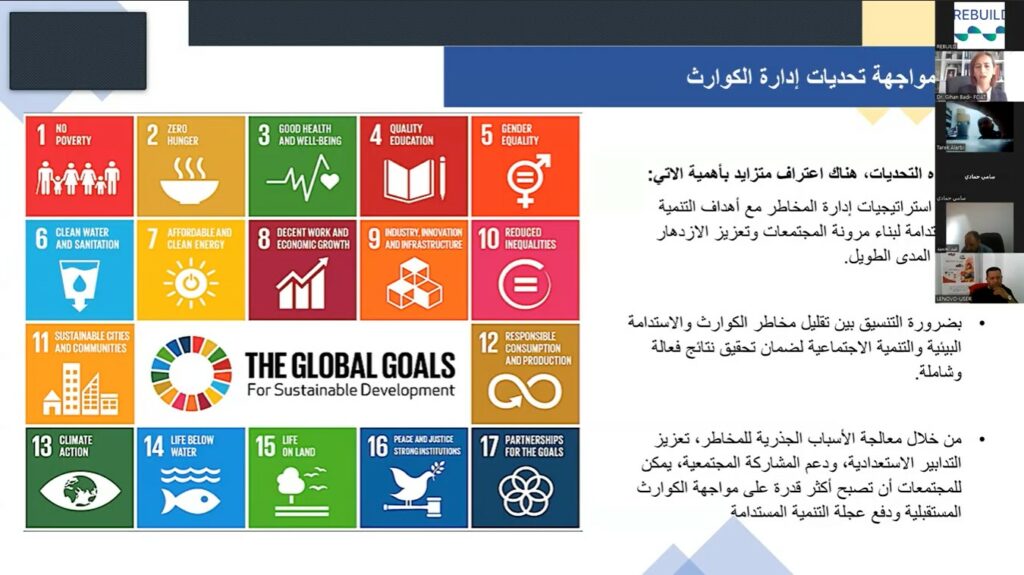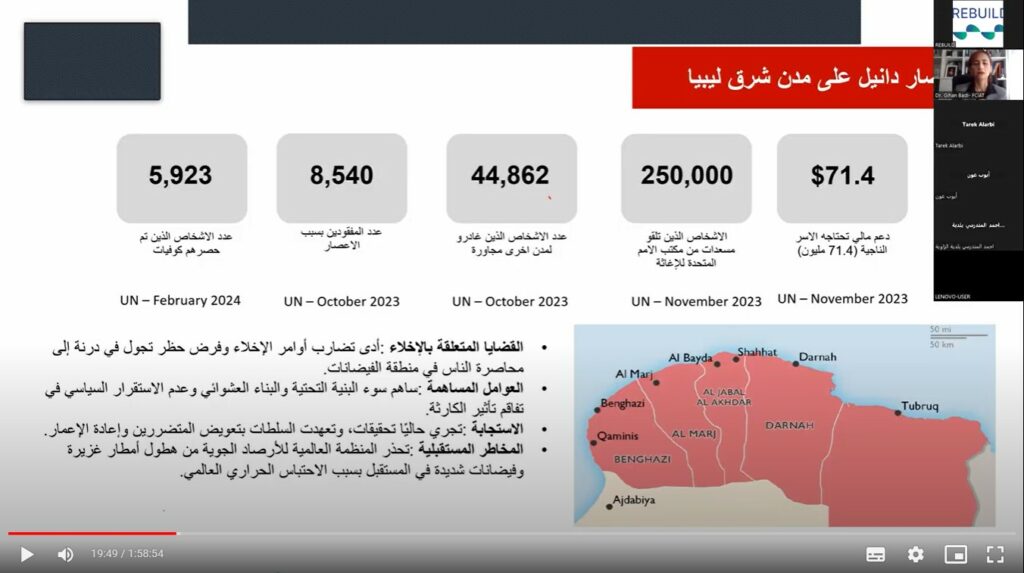 Dr. Gihan Badi
Dr. Gihan Badi
Founder of GB Atelier -CAIT Chartered Practice
Researcher in Disaster Risk Management & Built Environment Sustainability
Lecturer in Architecture & Architectural Technology
As the designer and facilitator of the Disaster and Crisis Management Training Workshop, in collaboration with the European Initiative REBUILD -Cycle 7, it has been my privilege to lead this important programme. This initiative was not only an opportunity to share my expertise in disaster management but also to engage in meaningful dialogue with Libyan municipal leaders. The dedication and active participation of the municipal officials throughout the sessions have been remarkable, and their commitment to strengthening their communities’ resilience has been truly inspiring.
The timing of this training could not have been more critical. The region is increasingly susceptible to extreme weather events—Libya has seen a rise in storms, floods, and heavy rainfall that have overwhelmed existing infrastructure. Municipal leaders are now tasked with addressing these vulnerabilities head-on, making this workshop an essential tool for safeguarding their communities. The knowledge shared in the sessions not only prepares municipalities for immediate challenges but also equips them with the foresight to plan for the future in the context of climate change.
Workshop Overview: A Pathway to Resilience
This workshop consisted of six core sessions, each carefully designed to address key aspects of disaster management. These sessions ranged from strategic planning to practical case studies. Given Libya’s vulnerability to increasingly severe storms, floods, and other climatic events, these lessons are critically important.
In the first sessions, we stressed the importance of readiness and proactive measures to mitigate disaster and hazards impacts. We explored the concept of building resilience, the challenges of Community-Based Disaster Risk Reduction (CBDRR), globalisation’s role, and the shift towards Multi-Level Governance in Disaster Risk Management. We also introduced the Making Cities Resilient Campaign 2030 and its 10 principles
We discussed the importance of linking Disaster Risk Management with Sustainable Development, drawing on frameworks (Hyogo Framework for Action and the Sendai Framework) which show how local governments can enhance community preparedness while pursuing broader development goals.
We also used case studies from Toyota, Rotterdam, and Malaysia to illustrate how cities and organisations are successfully integrating DRM/DRR into their sustainable development strategies.
In the fifth session, titled “Study of Storm Daniel – Understanding the Challenges Facing Libyan Cities,” I focused on Libya’s flood management challenges, particularly in the city of Derna. I examined the impact of Storm Daniel and the history of flood management in Libya, comparing these with international practices such as those in Malaysia’s Kelantan region. The discussion stressed the importance of improving infrastructure and community resilience to strengthen Libya’s ability to cope with environmental challenges.
The final session focused on strategies for strengthening DRM in Libyan cities, particularly in building community resilience and mitigating disaster impacts. I highlighted political instability, poor infrastructure, and unplanned urban expansion as significant factors that increase vulnerability to disasters such as floods. Drawing on case studies from the Philippines and Costa Rica, I showed how DRM can be integrated with sustainable development to improve resilience.
In conclusion, the collaboration between REBUILD and the Libyan municipalities has provided a fertile ground for exchanging knowledge and building robust networks of cooperation. I truly appreciate the valuable exchanges and teamwork displayed throughout the programme. This workshop is a significant step towards fostering resilience in Libya’s municipalities, empowering them to face the challenges posed by natural disasters and climate change.
—










